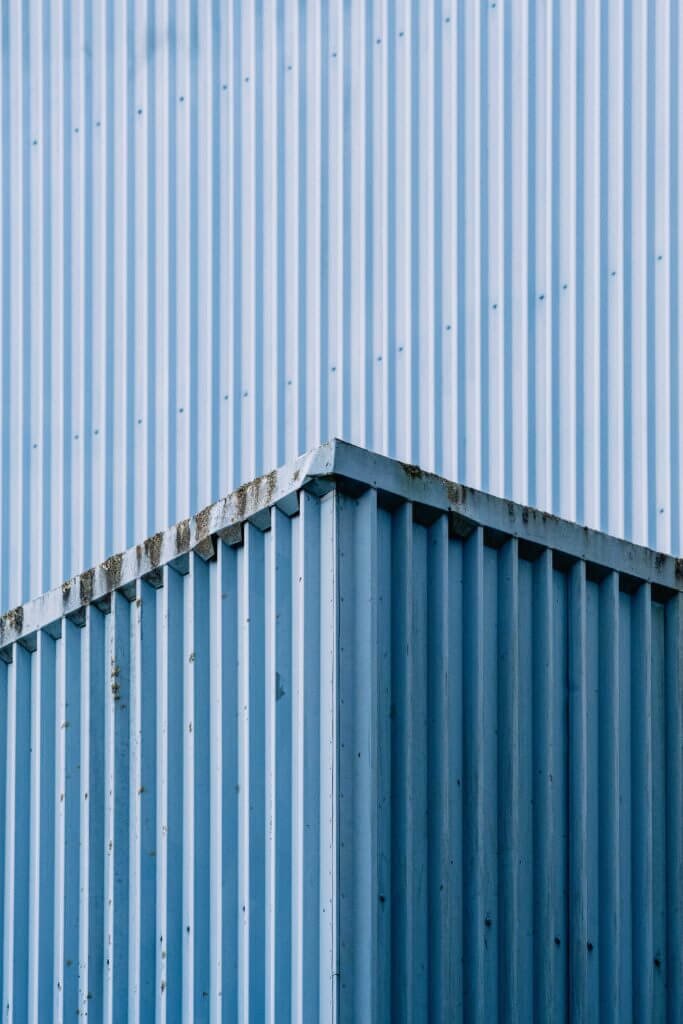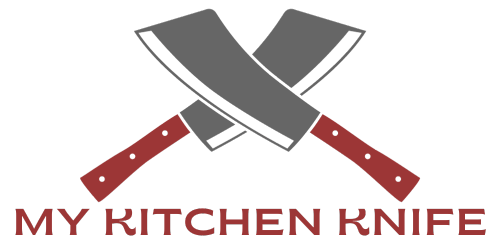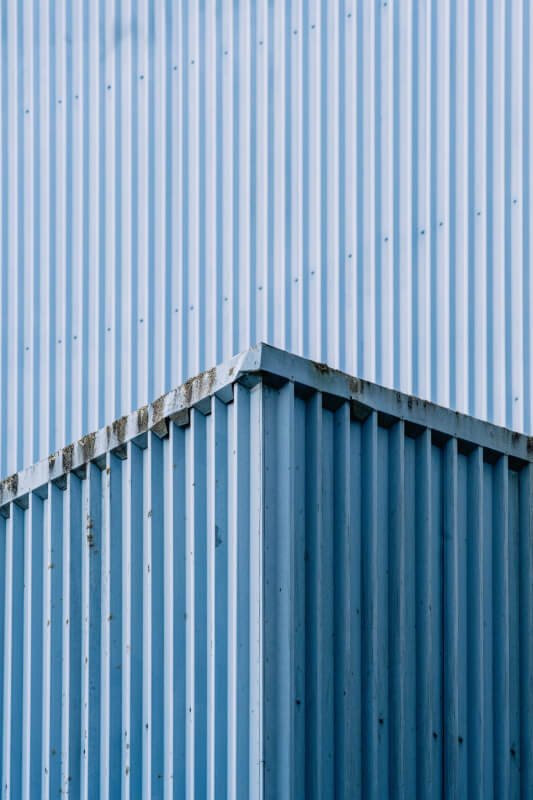If you’ve ever wondered about the differences between various knife materials, such as stainless steel and carbon steel, you’re about to find out. From the composition to the performance, knife materials play a crucial role in determining the quality and functionality of a blade. In this article, we’ll explore the key differences between these two popular knife materials, shedding light on their unique properties and how they affect your cutting experience. So, whether you’re a professional chef or just someone who enjoys cooking at home, get ready to gain some valuable insights into the world of knife materials. You’ll never look at your kitchen knives the same way again.

Stainless Steel
Stainless steel is a versatile and popular material used in the production of knives. Its composition is primarily made up of iron, chromium, and other elements such as nickel and molybdenum. This combination gives stainless steel its unique properties and makes it highly desirable for knife enthusiasts.
Composition
Stainless steel is composed of iron, which provides the necessary strength and durability, along with a significant percentage of chromium. The presence of chromium is responsible for the steel’s corrosion resistance, as it forms a protective layer on the surface of the knife, preventing rust and staining. Additional elements like nickel and molybdenum may also be added to enhance specific properties, such as hardness or toughness.
Strength and Durability
One of the key advantages of stainless steel knives is their strength and durability. The iron in stainless steel provides a solid foundation, allowing these knives to withstand heavy use without easily bending or breaking. This makes them ideal for tasks that require cutting through tough materials or ingredients without the risk of damage.
Corrosion Resistance
The presence of chromium in stainless steel gives it excellent corrosion resistance, making it highly resistant to rust and staining. This is particularly advantageous in kitchen environments where knives often come into contact with moisture and various food components. Stainless steel knives require minimal maintenance to upkeep their corrosion-resistant properties, ensuring they remain in pristine condition for years.
Sharpness Retention
Stainless steel knives have relatively good sharpness retention capabilities. While the blade may not retain its edge as long as some other materials, such as carbon steel, stainless steel knives can still maintain their sharpness for a satisfactory period. Regular honing and occasional sharpening will help to maintain the optimal cutting performance of stainless steel knives.
Ease of Maintenance
One notable advantage of stainless steel knives is their ease of maintenance. Unlike some other materials, stainless steel is non-porous and does not easily absorb odors or flavors from food. This makes cleaning stainless steel knives a simple task, requiring only basic soap and water. Additionally, stainless steel is less prone to staining, allowing for easy removal of any stubborn marks or discoloration.
Carbon Steel
Carbon steel is another popular material choice for knives known for its exceptional performance and unique characteristics. It primarily consists of iron and carbon, with varying levels of other elements depending on the specific composition.
Composition
Carbon steel knives are primarily composed of iron and carbon. The higher carbon content in carbon steel knives compared to stainless steel contributes to their remarkable hardness and sharpness retention. Higher-end carbon steel knives may also contain trace amounts of other elements such as chromium or vanadium to enhance certain properties.
Strength and Durability
Carbon steel knives are renowned for their impressive strength and durability. The higher carbon content results in a harder blade, allowing these knives to withstand rigorous use without the risk of chipping or breaking. The inherent strength of carbon steel makes it an excellent choice for demanding tasks that require precision and resilience.
Corrosion Resistance
While carbon steel knives offer exceptional performance in terms of sharpness and edge retention, they are more susceptible to corrosion compared to their stainless steel counterparts. Without proper care and maintenance, carbon steel knives can quickly develop rust and require regular maintenance to prevent corrosion. However, many knife enthusiasts find the unique patina that develops on the blade of a carbon steel knife to be aesthetically appealing.
Sharpness Retention
One of the standout features of carbon steel knives is their exceptional sharpness retention. The high carbon content in the blade allows for a finer edge, which contributes to superior cutting performance. Carbon steel knives can maintain their sharpness for prolonged periods, reducing the need for frequent sharpening or honing. This advantage makes them highly sought after by professional chefs and knife enthusiasts who prioritize cutting precision.
Ease of Maintenance
Maintaining carbon steel knives requires more attention compared to stainless steel knives. Due to their higher susceptibility to corrosion, carbon steel knives must be thoroughly dried after use and stored in a dry environment to prevent rusting. Additionally, regular oiling or applying a thin layer of protective wax can further enhance their corrosion resistance. While carbon steel knives demand more care, many enthusiasts find the process of maintaining their blades to be rewarding and enjoy the unique characteristics of these knives.

Hardness
Hardness is an essential factor to consider when choosing a knife, as it directly impacts its cutting performance and durability. Both stainless steel and carbon steel knives have distinct hardness characteristics.
Stainless Steel Hardness
Stainless steel knives typically have a lower hardness rating compared to carbon steel knives. This is due to the addition of chromium and other elements, which reduce the overall hardness of the steel. While stainless steel knives may not be as hard as their carbon steel counterparts, they still offer sufficient hardness for most applications, providing a balance between strength and ease of maintenance.
Carbon Steel Hardness
Carbon steel knives are known for their impressive hardness. The higher carbon content in the blade contributes to a harder material, allowing for exceptional edge retention and cutting performance. The hardness of carbon steel knives makes them well-suited for tasks that demand precision and a long-lasting sharp edge.
Toughness
Toughness is a crucial characteristic for knives, as it determines their ability to withstand impact and resist chipping or cracking. Both stainless steel and carbon steel knives exhibit differing levels of toughness.
Stainless Steel Toughness
Stainless steel knives generally possess excellent toughness. The combination of iron and other elements provides the necessary resilience to withstand heavy use without easily chipping or breaking. This toughness ensures that stainless steel knives remain reliable tools, even in demanding situations.
Carbon Steel Toughness
While carbon steel knives are renowned for their exceptional hardness, they typically exhibit slightly lower toughness compared to stainless steel knives. The high carbon content contributes to hardness but can result in slightly reduced toughness. However, this should not be a significant concern for everyday knife tasks, as carbon steel knives still possess sufficient toughness for most applications.

Sharpness
Knife sharpness is a critical factor for cutting precision and overall performance. Both stainless steel and carbon steel knives offer distinct sharpness characteristics.
Stainless Steel Sharpness
Stainless steel knives can be sharpened to a high degree and deliver satisfying sharpness. While they may not achieve the same level of sharpness as carbon steel knives, stainless steel knives still provide sufficient cutting performance for everyday tasks. Regular honing and occasional sharpening will help maintain their sharpness, ensuring consistent cutting capabilities.
Carbon Steel Sharpness
Carbon steel knives are prized for their exceptional sharpness. The high carbon content and typically higher hardness enable carbon steel knives to achieve superior levels of sharpness. A well-maintained carbon steel knife can effortlessly cut through various ingredients with exceptional precision. However, it’s worth noting that the super-sharp edge of a carbon steel knife requires careful handling to avoid accidental cuts or damage.
Corrosion Resistance
Corrosion resistance is a crucial aspect to consider, especially in environments where knives are exposed to moisture and different substances. The corrosion resistance of stainless steel and carbon steel knives varies significantly.
Stainless Steel Corrosion Resistance
Stainless steel knives are highly regarded for their excellent corrosion resistance. The chromium content in stainless steel creates a protective layer on the surface of the blade, preventing rust and staining. This corrosion resistance makes stainless steel knives suitable for use in humid or wet conditions, such as in professional kitchens or outdoor environments.
Carbon Steel Corrosion Resistance
Carbon steel knives have lower inherent corrosion resistance compared to stainless steel knives. Without proper care and maintenance, carbon steel knives are prone to rust and staining. However, many knife enthusiasts appreciate the unique patina that develops on carbon steel blades over time, considering it a desirable characteristic rather than a drawback. With regular maintenance and proper handling, corrosion can be minimized, ensuring the longevity of carbon steel knives.
Edge Retention
Edge retention refers to a knife’s ability to maintain its sharpness over time. Different materials exhibit varying levels of edge retention, which can significantly impact cutting performance.
Stainless Steel Edge Retention
Stainless steel knives generally have a good level of edge retention. While they may not retain their sharpness as long as some other materials like carbon steel, stainless steel knives offer sufficient edge retention for most regular kitchen tasks. Regular honing and occasionally sharpening the blade will help to maintain optimum cutting performance.
Carbon Steel Edge Retention
Carbon steel knives excel in terms of edge retention. The high carbon content and hardness allow carbon steel knives to maintain an exceptionally sharp edge for extended periods. This advantage makes carbon steel knives desirable for tasks that demand precise cutting and long-lasting sharpness. However, due to their harder nature, carbon steel knives may be slightly more prone to chipping if subjected to excessive force.
Ease of Maintenance
Maintenance plays a significant role in the longevity and performance of any knife. The ease of maintenance varies between stainless steel and carbon steel knives.
Stainless Steel Maintenance
Stainless steel knives are relatively easy to maintain compared to carbon steel knives. Their corrosion-resistant properties and non-porous nature simplify the cleaning process. Basic soap and water, along with regular thorough drying, will keep stainless steel knives in excellent condition. Additionally, stainless steel knives are less likely to stain, making it easier to remove any marks or discoloration.
Carbon Steel Maintenance
Carbon steel knives require more attention and care when it comes to maintenance. Due to their susceptibility to corrosion, carbon steel knives must be thoroughly dried after each use and stored in a dry environment to prevent rusting. Furthermore, regular oiling or applying a thin layer of protective wax can enhance their corrosion resistance. While the maintenance routine for carbon steel knives may be slightly more involved, many knife enthusiasts embrace this process, appreciating the unique properties and character of these knives.
Price
Price is often a determining factor when choosing a knife material. Stainless steel and carbon steel knives come at different price points, influenced by various factors.
Stainless Steel Price
Stainless steel knives are generally more affordable compared to their carbon steel counterparts. The availability and lower production costs of stainless steel contribute to their more budget-friendly price range. While there are higher-end stainless steel options available, stainless steel knives offer an excellent balance between performance and affordability, making them accessible to a wide range of users.
Carbon Steel Price
Carbon steel knives tend to be more expensive than stainless steel knives. The higher cost is primarily due to the more complex production process and the scarcity of high-quality carbon steel. Additionally, the exceptional performance and unique characteristics offered by carbon steel contribute to its higher price point. However, knife enthusiasts and professionals often consider the investment in a carbon steel knife to be worthwhile due to its outstanding performance and longevity.
Application
The choice between stainless steel and carbon steel knives ultimately depends on the intended application and personal preferences. Both materials have their strengths and weaknesses, making them suitable for various tasks.
Stainless Steel Application
Stainless steel knives are commonly used in both household and commercial kitchens due to their versatility and ease of maintenance. The corrosion-resistant properties of stainless steel make these knives ideal for tasks involving acidic or moisture-rich ingredients. Stainless steel knives are also popular among outdoor enthusiasts due to their durability and resistance to the elements.
Carbon Steel Application
Carbon steel knives are highly sought after by professional chefs, culinary enthusiasts, and collectors who prioritize exceptional sharpness and precise cutting performance. Their superior edge retention and hardness make carbon steel knives well-suited for intricate tasks that demand precision and control. Additionally, the aesthetic appeal of the patina that develops on carbon steel blades adds to their allure for those who value the unique character of their knives.
In conclusion, the choice between stainless steel and carbon steel knives depends on individual preferences and specific requirements. Stainless steel offers excellent strength, durability, and corrosion resistance, along with relatively easy maintenance. On the other hand, carbon steel knives provide exceptional sharpness, edge retention, and hardness, but require more attention to prevent corrosion. Consider the intended application, maintenance routine, and budget when deciding between these two popular knife materials.


